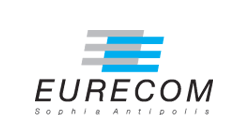The human brain receives nutrients and oxygen through an intricate network of blood vessels. Pathology affecting small vessels, at the mesoscopic scale, represents a critical vulnerability within the cerebral blood supply and can lead to severe conditions, such as Cerebral Small Vessel Diseases. The advent of 7 Tesla MRI systems has enabled the acquisition of higher spatial resolution images, making it possible to visualise such vessels in the brain. However, the lack of publicly available annotated datasets has impeded the development of robust, machine learning-driven segmentation algorithms. To address the complexities of mesoscopic vessel segmentation and to highlight the need for advanced techniques to manage the high noise levels and poor vessel-to-background contrast inherent in ”ultra-high-resolution” data, the SMILE-UHURA challenge was organised. This challenge, held in conjunction with the ISBI 2023, in Cartagena de Indias, Colombia, aimed to provide a platform for researchers working on related topics. The SMILE-UHURA challenge addresses the gap in publicly available annotated datasets by providing an annotated dataset of Time-of-Flight angiography acquired with 7T MRI. This dataset was created through a combination of automated pre-segmentation and extensive manual refinement. In this manuscript, sixteen submitted methods and two baseline methods are compared both quantitatively and qualitatively on two different datasets: held-out test MRAs from the same dataset as the training data (with labels kept secret) and a separate 7T ToF MRA dataset where both input volumes and labels are kept secret. The results demonstrate that most of the submitted deep learning methods, trained on the provided training dataset, achieved reliable segmentation performance. Dice scores reached up to 0.838 ± 0.066 and 0.716 ± 0.125 on the respective datasets, with an average performance of up to 0.804 ± 0.15.
SMILE-UHURA Challenge - Small vessel segmentation at mesoscopic scale from ultra-high resolution 7T magnetic resonance angiograms
Submitted to ArXiV, 14 November 2024
Type:
Journal
Date:
2024-11-14
Department:
Data Science
Eurecom Ref:
7967
Copyright:
© EURECOM. Personal use of this material is permitted. The definitive version of this paper was published in Submitted to ArXiV, 14 November 2024 and is available at :
PERMALINK : https://www.eurecom.fr/publication/7967



